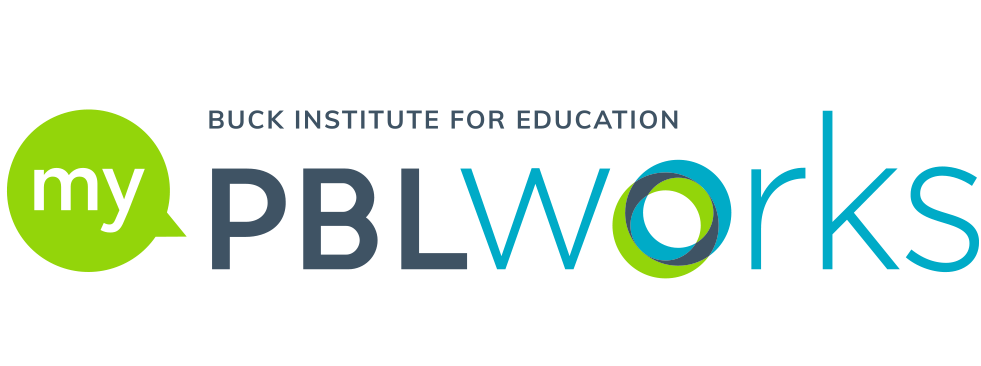A Project Slice: All the Toppings, and You Want More

We’ve added a new feature to our professional development offerings and conference presentations: a “project slice.” It’s meant to demonstrate what it’s like to be a learner in PBL, by engaging participants in an immersive PBL experience—basically a very short project. We recommend it to schools and districts as a strategy for building understanding of PBL among a staff or school community.
Why try a slice of PBL? Because as our ED Bob Lenz says, “I often ask groups of educators, How many of you have participated in a PBL unit as a learner? Typically, maybe one in five have had this experience - sometimes as low as one in 20. How do we expect leaders to set the conditions for great projects to thrive and teachers to facilitate a project, if they have never experienced one as a learner?”
The “project slice” has been used by Envision Schools (with a nod to Expeditionary Learning) and also at High Tech High in San Diego, where it’s a part of a weeklong “deep dive” into PBL during their summer professional development for new teachers. You can read about Kaleb Rashad’s experience at High Tech High in this blog post at Getting Smart, describing a project slice he did on the topic of refugees.
Our project slice typically lasts one day. It could be a done in a bit less time, but it should include all of the Essential Elements of a Gold Standard project. Think of it like a slice of pizza. On each slice you get all the ingredients and toppings found on the whole pie – and if you think it’s tasty, you’ll want more.
Sample Slices
Patterns Project: Last year, as part of a staff retreat, our new executive director Bob Lenz asked us to engage in the “Patterns Project” slice. We formed teams and investigated the driving question: How can understanding patterns help us consider their application to everyday problems? We read about patterns in nature, ventured out into the community to find and photograph examples of one pattern, then assembled a multimedia presentation with our answer to the driving question. It was all there: inquiry, content knowledge and success skills, a public product, reflection, and so on. We were even assessed with a rubric. And it was fun.
We have expanded this project slice since then, and created all the materials to support it, including handouts, PowerPoint slides, and facilitator’s notes. It was successfully used by principals with their teachers last August in our partner Novato Unified School District. (See our chief program officer Brandon Wiley’s blog about this event.)
Immigration/Cultural Identity: Last March at our National Faculty Summit, we engaged them in a project slice that linked to our ongoing discussion of equity issues. For the entry event they examined some evocative historic photographs, which turned out to be from the immigration station on Angel Island in San Francisco Bay, where many immigrants, especially Chinese, had to stay in the early 20th century. The driving questions: Why do we exclude people? Are there recurring patterns?
To conduct inquiry, our National Faculty members rode the ferry out to the island, where they got a tour of the former barracks, took pictures, and wrote in journals. They read about the history of the time and reflected on the poetry inscribed on the walls of the barracks by the Chinese. For a final product, they created either a digital story or free-verse poem.
Community Voices: Past, Present, and Future: This project slice is being conducted by PBLWorks at some conferences this year, including iNACOL in San Antonio on Oct. 25. We use a couple of different scenarios for this slice. In one, participants assume the role of community planners, working in teams to explore the local and cultural context of the city they’re in, develop a digital interpretation of their findings, and craft a proposed vision for the future of the city.
In another version, participants collaborate in teams to create a plan for a museum exhibit about the past, present, and future of the city they’re in. Participants conduct field research, interview local community members, and select or create artifacts to help tell the story of the community. The teams exhibit their plans in a Gallery Walk at the end of the day.
Key to Success: Debriefing a Project Slice
At the end of a project, teachers and students talk about what they’ve been through, reflecting on what and how they learned. Same thing goes for a project slice. A debrief helps cement the experience for the learner. Here are the prompts we’ve used to accompany a project slice:
- I learned… (factual)
- I was surprised by… (emotional response)
- This experience reminds of a student named… because… (personal connection)
- I used to think… Now I… (shift in critical reflection)
- Based on what I learned today, I made a connection to… in my practice (connections)
- In order to move forward, I want to know more about.... (next steps)
A slice is a great way to begin a PBL initiative, because like an entry event for a project it carries a lot of emotional weight and creates a genuine “need to know” more about PBL and how to make it happen for all students. I could see a project slice debrief being conducted in the same format many PBL teachers use following an entry event in a project: create a two-column chart, asking participants what they now know about PBL, and what they need to know more about. The main goal after a project slice is to reflect on what PBL is and how it can be transformative for students – and what its implications are for teachers and schools.
For information about PBLWorks’ professional development services, including the Project Slice, click here.
To view or download this resource, log in here.
Login